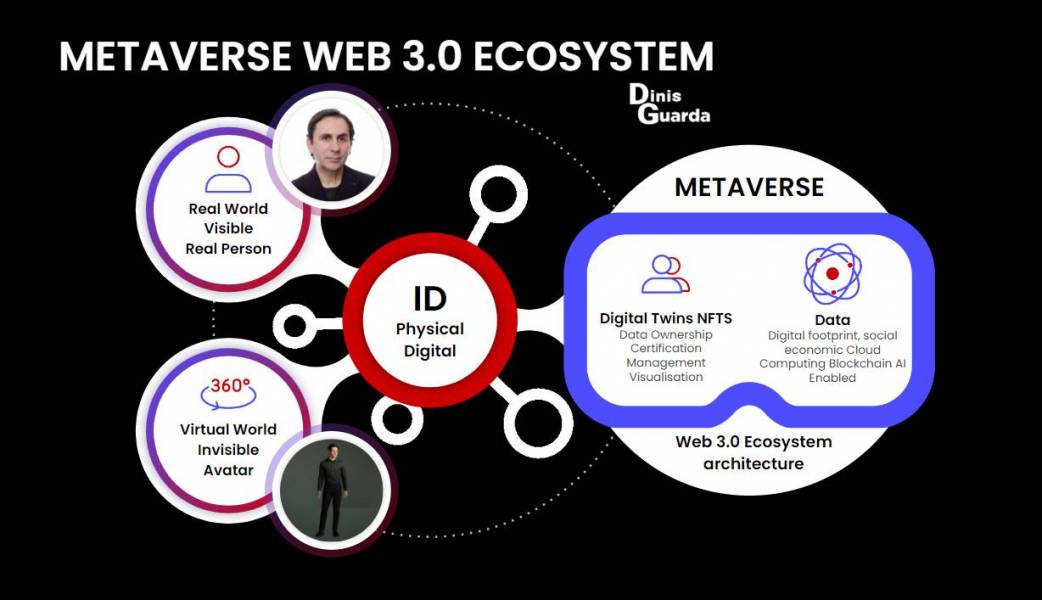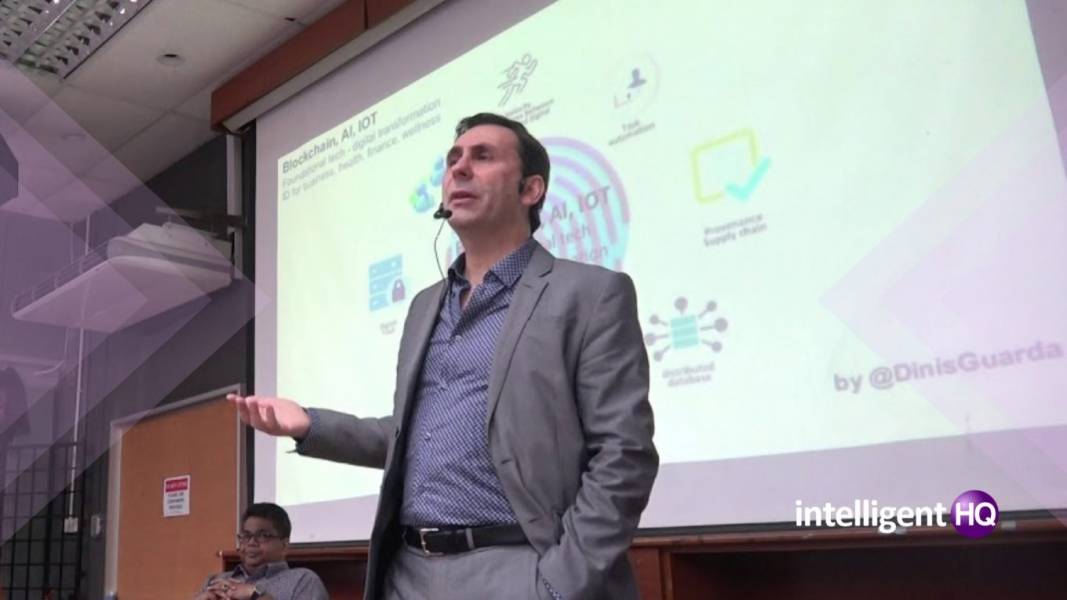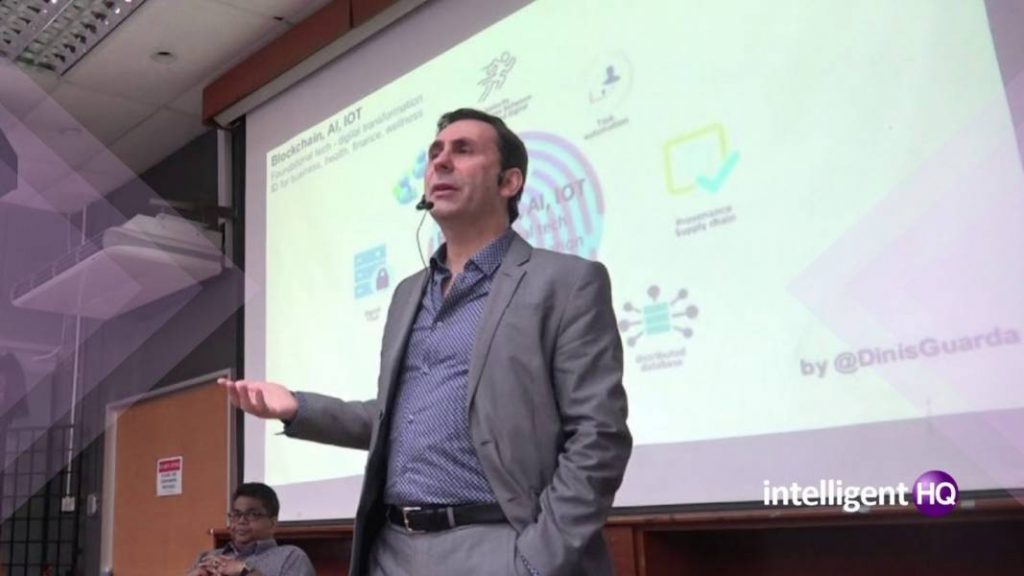• Dinis Guarda’s latest infographic displays how the Web 3.0 internet ecosystem, exploring the ways how techs like Digital Twins and Data intertwine to create a complete digital, metaverse human experience.
• In one of the applications of Web 3.0, the digital world gets immersive by simulating the real world and making it interactive for the users. This is the Metaverse the world is talking about today.

With an accelerated rush by global corporations to establish themselves in the latest metaverse technology, the world is (knowingly or unknowingly) welcoming the advent of the Web 3.0 era with open arms. Dinis Guarda, founder and CEO of citiesabc, openbusinesscouncil and ztudium, has been exploring the realm since its inception. Contextualising the concepts in a new infographic, here’s how he explains the evolution of the internet to evolve into what we know as Web 3.0 and how it creates an ecosystem using blockchain technology for carving out the metaverse of our future.
Web 3.0: A decentralised version of the internet
The third generation of the Internet, popularly known as Web 3.0, is in its bare infancy. It is the iteration that shifts the control of the internet from centralized players to its builders and users.
But how does this work?
This control chain is orchestrated with the availability of tokens on the blockchain, a decentralised ledger system for digital transactions.
Does this mean we are ushering into a new era where creators, developers, businesses, and users are alike?
Yes, indeed. This is what we mean by decentralisation, Dinis explains.

According to him, Web 3.0 rose to popularity because of its inherent nature to leverage innovation with ownership. In other words, each participant gets property rights over a piece of the internet using tokens- both fungible and non-fungible (or NFTs).
But, that’s just one aspect of it.
Another distinguishing feature is adding an extra layer of security to the transactions with a feature called smart contracts.
Overall, this fixes the core problem of limited functionality in Web 1.0 and the centralised model of Web 2.0.
Dinis affirms that the new Web 3.0 will offer fresh ways to combine the best aspects of the previous eras and enhance them in a decentralised manner.
Referring to his vision of Web 3.0 ecosystem, the existence of digital twin means an individual has two identities- one that exists in the real world (the physical Id), and the other is in the virtual world (or the digital identity, or the avatar).
Now, how are the two worlds connected, let’s find out what Dinis Guarda thinks of this?
Metaverse: Interactivity between a variety of Web 3.0 applications
The Metaverse, as it stands today, is a variety of web 3.0 applications with various levels of interactivity and adoption. It is an immersive digital space that simulates the real world and focused on social connections among digital twins.
The data, available through technologies like cloud computing and blockchain, is collected and enabled with AI within the Web 3.0 ecosystem. This incentivises the creators and users to manage their personal data as they wish.
In other words, the decentralised nature of Web 3.0 offers better data ownership avenues for the users of the ecosystem.
“We are going through a paradigm shift where ownership transforms itself from the real world to the digital world, the metaverse, that encompasses this promise of ownership.”, says Dinis Guarda (title). According to him, “This is not a new concept. However, with NFTs and the blockchain gaining traction, we are going to see a lot of builders and creators innovating across the multitudes of the digital world.”
The Metaverse Revolution: 10 Industries That Will Change
The digital world, hereafter…
Over time, these multiverses might progress towards complete decentralisation, opening fresh avenues for newer platforms, and outdating the traditional ones. Dinis concludes that while Metaverse and Web 3.0 are still evolving, data interoperability, data ownership, and parallel multiverses are some of the budding fruits in this garden of the digital realm.

Hernaldo Turrillo is a writer and author specialised in innovation, AI, DLT, SMEs, trading, investing and new trends in technology and business. He has been working for ztudium group since 2017. He is the editor of openbusinesscouncil.org, tradersdna.com, hedgethink.com, and writes regularly for intelligenthq.com, socialmediacouncil.eu. Hernaldo was born in Spain and finally settled in London, United Kingdom, after a few years of personal growth. Hernaldo finished his Journalism bachelor degree in the University of Seville, Spain, and began working as reporter in the newspaper, Europa Sur, writing about Politics and Society. He also worked as community manager and marketing advisor in Los Barrios, Spain. Innovation, technology, politics and economy are his main interests, with special focus on new trends and ethical projects. He enjoys finding himself getting lost in words, explaining what he understands from the world and helping others. Besides a journalist, he is also a thinker and proactive in digital transformation strategies. Knowledge and ideas have no limits.












